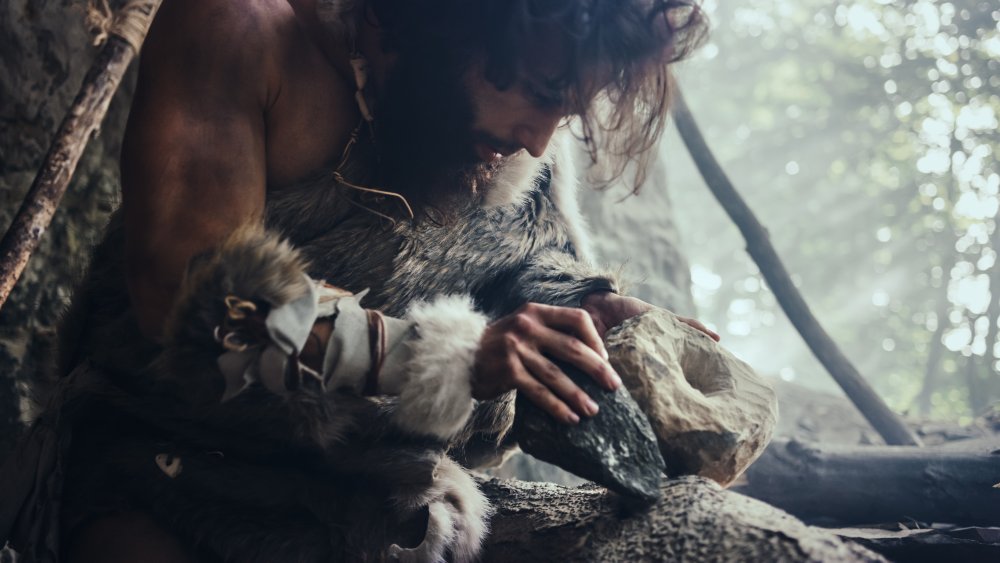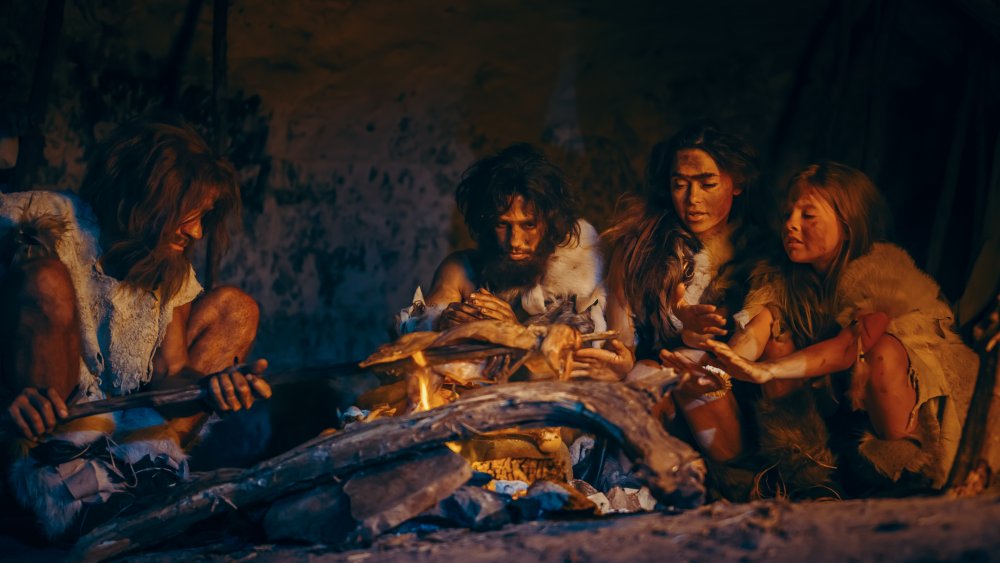The Disturbing Thing That People Ate During The Stone Age
Life during the Stone Age was a constant struggle just to stay alive, with most people dying well before anything like old age, per the New York Times. To add insult to injury, it's pretty likely that once a Stone Age man, woman, or child died, their surviving friends and family would mourn their loss while simultaneously celebrating a sudden bounty of food by eating the deceased.
According to Ars Technica, in 2017 anthropologists from Spain's University of Valencia described their discovery of human bones within a cave near the coast of Alicante, Spain. Some of the 30 bones displayed marks that indicate what the scientists called "anthropophagic practices" — cannibalism.
The remains suggest that there were two separate meals that took place between 9,000 and 10,000 years ago. There were no signs of violence, which means the deceased were probably eaten after they died, as opposed to being killed for the purpose of being eaten. Anthropologists were unable to determine for sure whether the Stone Age survivors ate the dead out of desperation during a poor hunting, gathering, or growing season, or if they consumed fellow humans as a funeral practice. The University of Valencia anthropologists noted that "cannibalism and socio-cultural transformation phases are associated with each other," and during this time period people were living in camp communities for longer periods of time and developing new techniques in tool-making, art, and cooking.
It was more common than you might expect
Evidence of prehistoric cannibalism exists in other parts of Europe as well. The Guardian reported in 2010 that British scientists had identified the bones of tribes of hunter-gatherers in a cavern called Gough's Cave in Somerset, England. The people had lived there about 14,700 years ago and "were using sophisticated butchering techniques to strip flesh from the bones" of other humans, according to Professor Chris Stringer of London's Natural History Museum. This made them quite skilled at getting every bit of meat off the bone for consumption. The British scientists were unable to determine if the cannibalism was a ritual process, nor if the people who were eaten had been deliberately murdered, but the people eating the dead seemed to use the same tools to butcher humans as they used to butcher animals.
The remains of those who had been eaten included a young child, two adolescents, a younger adult, and an older adult. Theories again include the cannibalism as "a form of ritual which involved the eating of small pieces of a relative's flesh, not as a source of nutrition, but as an act of homage," or perhaps "crisis cannibalism" — eating people because there were no other, and better, food sources available. Phys.org quoted scientists from England's University of Brighton, who noted that "kilo for kilo, a wild horse, bear or boar had more than three times the calories in fat and protein than our lean-and-mean human ancestors."

